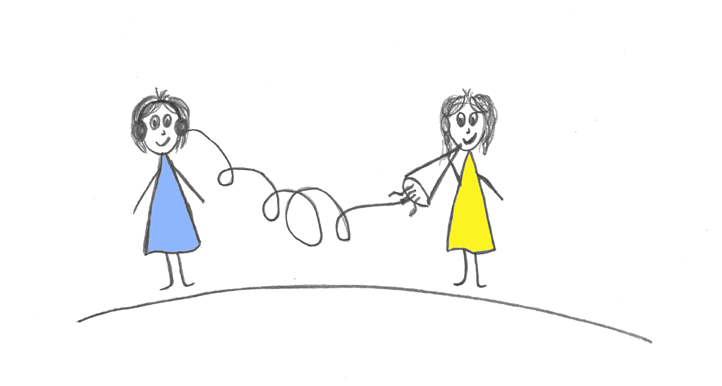...listening to your users

User Experience Designer. These words themselves say what we do. We design experiences for users. It’s very clear that we design it for someone else, not for ourselves. We create a medicine for someone’s pain. One of the first and essential steps we take is interviewing potential or existing users. We do it to find out what they know that we don’t.
Imagine that there is a user who has some pain in his life. He knows everything about it and can describe it as no one else can. It would be great if someone would solve this problem for him since he doesn’t want to solve it by himself. Our client wants to solve the problem for the user. He knows about the existence of the problem. He has an idea how to solve it. But he needs some help to create a user-centered product. We as UX designers know everything that the client knows, but we know nothing about the user. We have some ideas how to solve the problem, but we understand that it’s just our own thoughts, not the user’s thoughts.
Let’s put this puzzle together. How can we create a win-win situation?
We need to tie everything into one piece. But we need to find the missing part. That missing part is the user and what he knows. He has everything we need! But how can we gather necessary information from the user? We LISTEN. If we put all of our efforts into listening, we will be able to find the missing part we need and get the desirable result.
Imagine that we talk rather than listen. The only result that we will get is just spreading information that we already know and we will make an impact on the user’s opinion. But we won’t find the missing part. It won’t help us to move to the next step.
Imagine that we listen rather than talk. The result should be outstanding! It’s a win-win situation. We gather information from our direct user. Now, we have the missing part we need.
Whitney Hess, in her article, “My Best Advice For Conducting User Interviews”, writes
Ask your question, and then shhh. Let them answer, even if it takes a moment. Stop yourself from offering up answers for them to choose from, like “Where do you do most of your shopping? Sam’s Club, Walmart, Target?” They’ll grasp on to one of the options you’ve provided and never mention the Farmer’s Market down the road with the freshest herbs in town.
Learn To Listen
Stephen Covey in his famous book, “The 7 habits of highly effective people”, said
We must learn to listen which involves patience, openness, and desire to understand.
Let’s think about it.
Patience
Patience is “the capacity to accept or tolerate delay, trouble, or suffering without getting angry or upset.”
It’s our ability, skill, and we all can develop it. Practice makes perfect; so practice being patient. Every time when you are close to exploding, say to yourself that by being patient you are growing. You are teaching yourself to have control over any situation. Be aware of every moment. We are all different. We have different temperaments, skill sets, and ability to express our thoughts. Accept it, and don’t try to change someone else. Change your attitude instead.
In order to challenge your assumptions and uncover hidden truths, you’re going to have to check your ego at the door. While interviewing people, it is not your goal to demonstrate how much you know, but instead to find out what they know, how they think about it, what they call it, and how they think it all works. - Whitney Hess
Openness
Every time you communicate with the users, make sure to be objective enough to see the situation from their viewpoint. It will help you to see the bigger picture and eventually sum up your puzzle.
Always impugn your own opinion, especially if it’s not based on research you have made.
Desire to Understand
If you truly want to learn to listen, and you put all your efforts into being patient and open, the only thing that will help you to use what you hear is your desire to understand it.
There is a difference between listening and waiting for your turn to speak. - Simon Sinek
It’s up to us listen, or just wait. Waiting definitely involves patience and some openness, but it doesn’t involve your desire to understand. And without it you won’t be able to use the fruit of your patience.
The true desire to understand what the users say helps to find the right solution to the problem.
In Conclusion
Listen to your users by being patient and open. Develop your desire to truly understand. Then make your design speak for you.
You have two ears and one mouth, use them accordingly. - Stephen Cavey